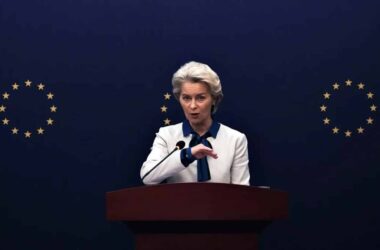The recent ceasefire in Gaza, ably negotiated Trump appointee Steve Witkoff, may represent a springboard for renewed engagement in the Near East, insofar as it allows the White House to strengthen its diplomatic relations with Turkey, Saudi Arabia, the Gulf States. To the degree that peace can be secured with a de-escalation in Gaza, Lebanon and elsewhere, popular polarization against the U.S. in the region can begin to reduce, thereby affording Trump a chance to roll back the influence of competing power blocks. One way in which this may manifest is by increasing the ability of key players, including Saudi Arabia and Turkey, to project their interests in the region through Iran-containment.
The U.S. has a vested interest, after all, not only in securing energy supplies from the Near East but in retaining influence over the Red Sea and Suez Canal, and will not want popular discontent in the Arab world to force its governments into normalizing with Iran (ultimately, replacing American hegemony partly with China).
China’s expanding presence in the Middle East in the form of investment and trade relations represents an additional incentive in this regard. Over half of China’s oil imports are sourced from the region, which is also significant for the Belt and Road Initiative. Politically, its 2023 mediation of the rapprochement between Saudi Arabia and Iran was a watershed moment marking the possible “passing of the torch” so far U.S. geopolitical patronage over Saudi Arabia is concerned. Breaking this possible rapprochement by containing Iran and strengthening the Saudi hand would thus, ultimately, represent a way to push China back.
Trump’s record in this area indicates such a move might, indeed, be in the cards. His first tenure was marked by a sharply adversarial approach to Tehran, including the withdrawal from the Joint Comprehensive Plan of Action (JCPOA), the “Maximum Pressure” strategy, which saw the imposition of crippling sanctions targeting key pillars of Iran’s economy, and the strike against Qasem Soleimani, leader of Iran’s Revolutionary Guard.
The effectiveness of a return to such a policy by Trump is made likely by the fact that Iranian ambitions at regional hegemony have faced serious roadblocks. Iran’s lackluster retaliations against Israel have likely damaged its credibility, and it currently faces a general inability to provide arms to Hezbollah and other local actors, following the fall of Bashar al-Assad (albeit even Assad was impeding Iranian access to Lebanon towards the end of his regime).
However, the present ceasefire is unlikely to last its full negotiated term, much less serve as a basis for permanent peace. And as hostilities flare up again, rehabilitating the Abraham Accords and gaining long-term explicit alignment with the U.S. in the Near East may prove a significant challenge for Donald Trump.
It is also the case that, with the winding-down of the Ukraine conflict, and depending on China’s wider ambitions, Iran’s hand might be strengthened, ensuring that regional competition remains intense.
Washington’s ability to navigate the resulting contest for the Near East will be a significant test for Trump and his cabinet.




